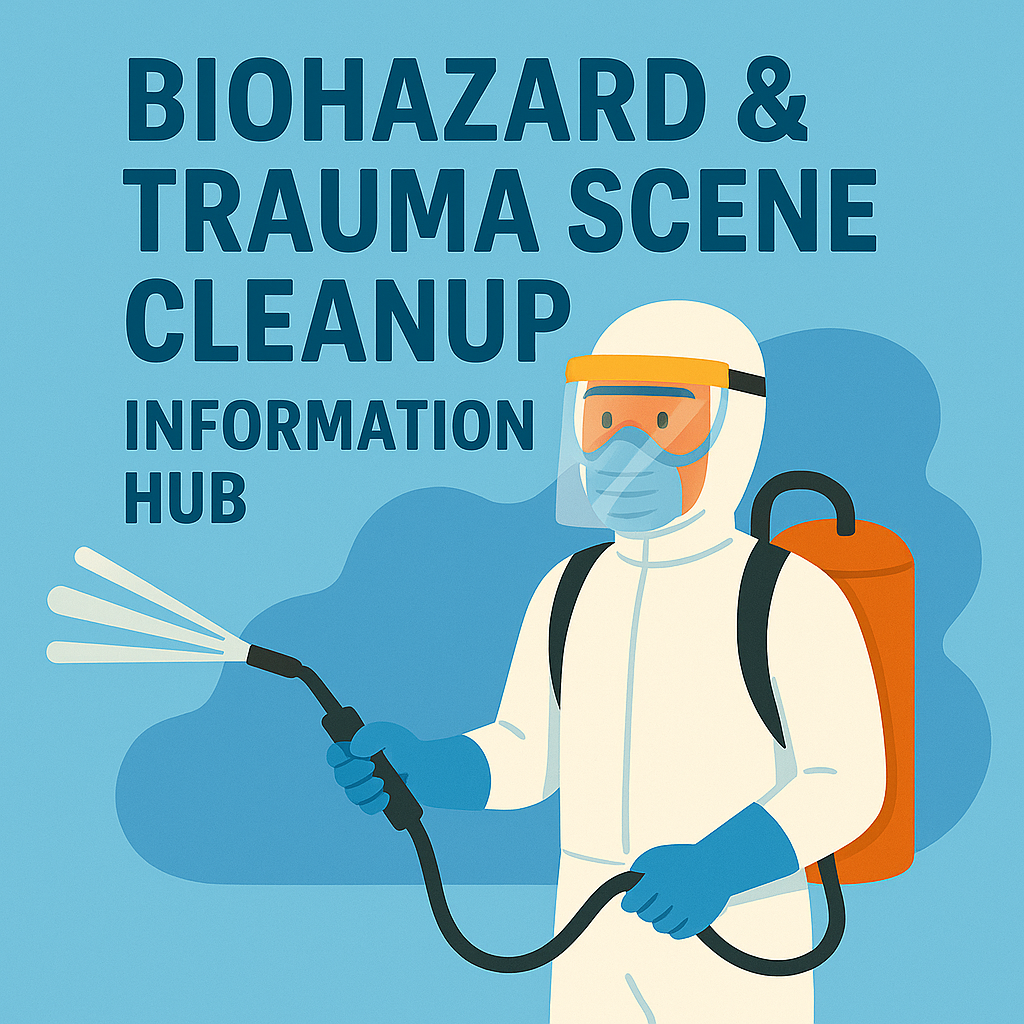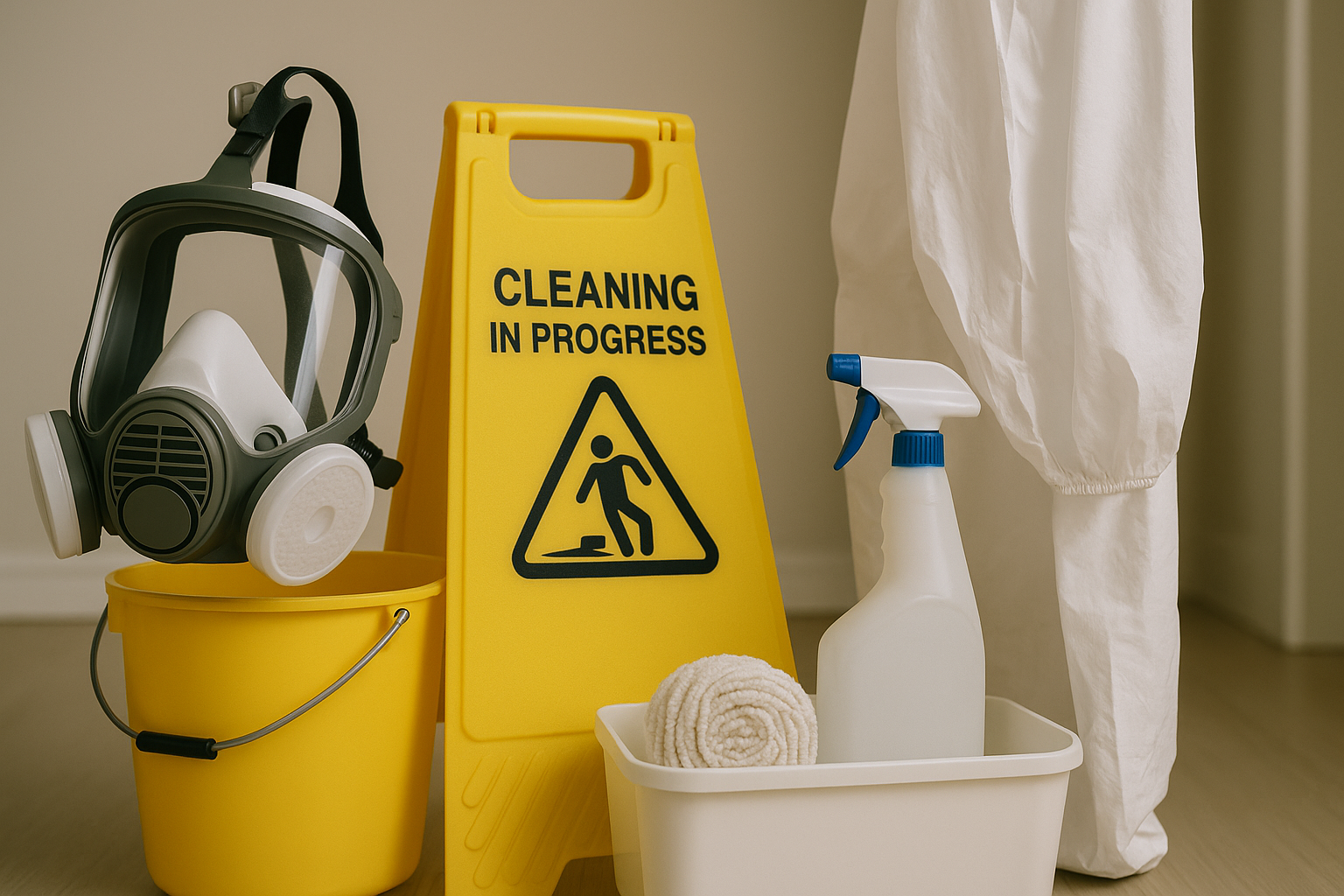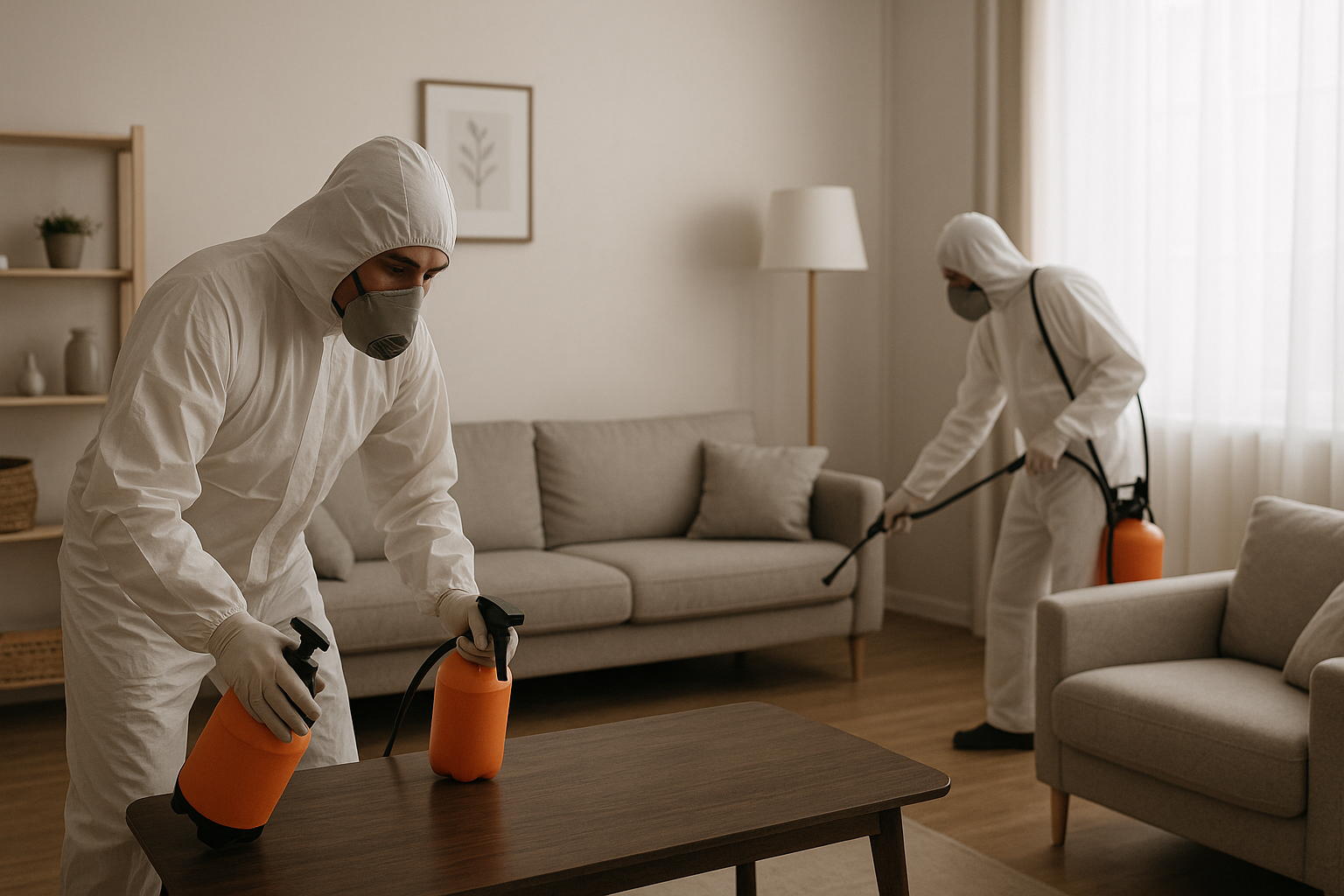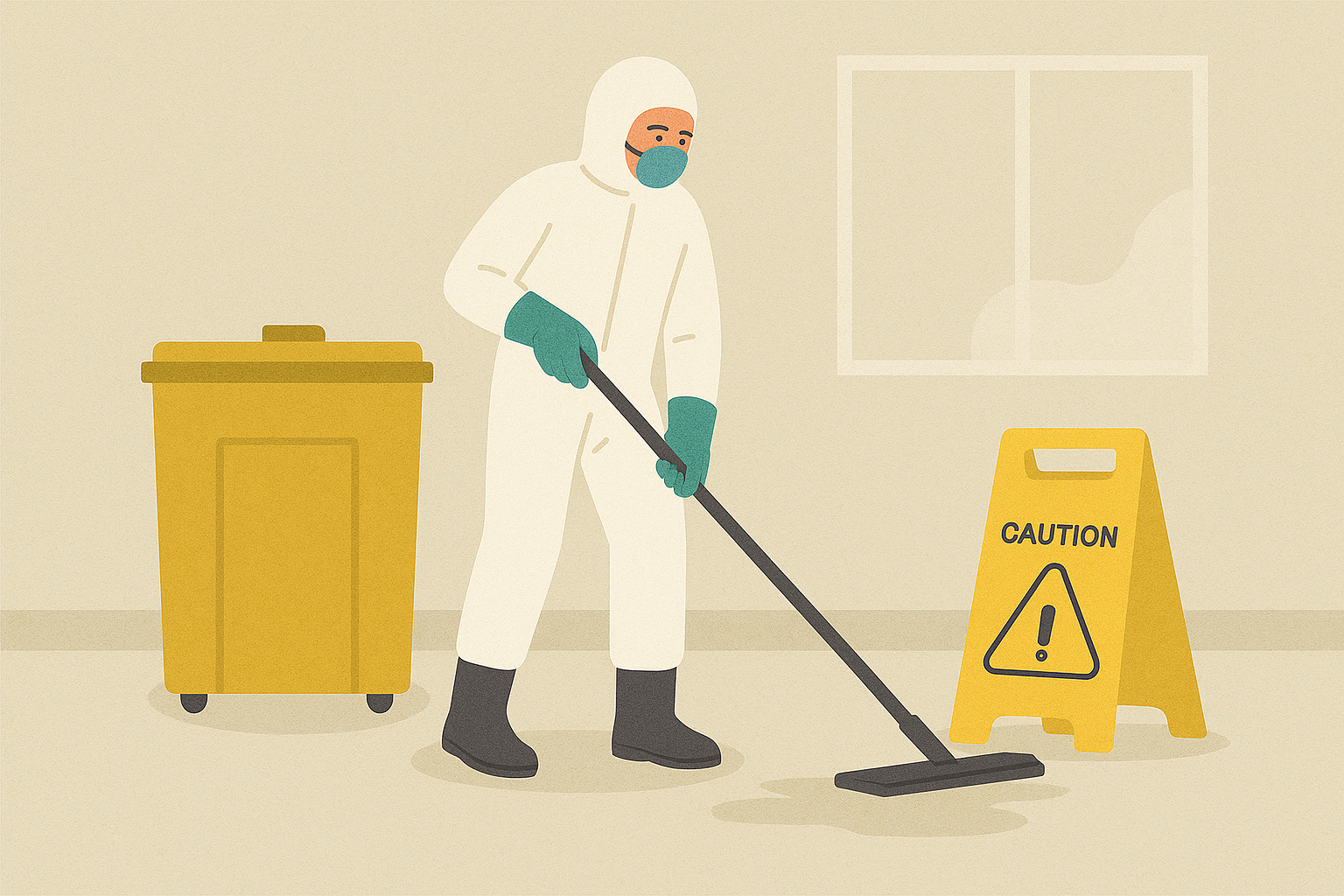The cleanup you never expected.
The Biohazard & Trauma Scene Cleanup Information Hub
No one plans to need biohazard or trauma scene cleanup, but when the unthinkable happens, knowing what to do next matters. Whether it’s an unattended death, suicide, or crime scene, these situations require more than just a mop and bucket. This guide breaks down what these services involve, why certified professionals are essential, and how to move forward safely, legally, and compassionately.

Key Things To Know
If you're facing a situation that requires biohazard or trauma scene cleanup, you're probably overwhelmed and unsure where to start. This isn't like hiring a regular cleaning service. These jobs are governed by health regulations, require special training, and often involve emotional decisions for families. Here are the most important things to understand:
- It’s not handled by police or first responders. Once the scene is cleared, cleanup is the family’s or property owner's responsibility.
- There are strict safety and legal standards. Cleanup must follow OSHA, EPA, and sometimes state-specific protocols.
- Biohazard cleaners are trained professionals. They use specialized equipment to safely remove and dispose of hazardous materials.
- Time matters. The longer biohazards remain, the greater the health risk and damage to the property.
- Insurance often covers the cost. Many homeowners policies include coverage, especially for unattended deaths and certain traumas.
- You can choose who you hire. You're not required to go with the first company recommended. Take time to find someone certified, experienced, and compassionate.
- Support is available. It’s okay to ask for help, both emotionally and practically. Some companies offer grief resources or can connect you with them.
Understanding The Types of Cleanup Services
Not all cleanup jobs are the same. From general biohazard removal to specific situations like unattended deaths or homicides, each type of scene requires unique skills, equipment, and sensitivity. Here's a breakdown of the most common categories of cleanup services and what each one involves.
General Variants
Biohazard Cleanup
This refers to the removal, cleaning, and disinfection of materials contaminated with biological hazards such as blood, bodily fluids, or other potentially infectious substances. It’s commonly used after trauma, unattended deaths, or infectious disease outbreaks.
Trauma Cleanup
Trauma cleanup covers a wide range of incidents including accidents, suicides, or violent crimes. It involves safely handling bloodborne pathogens and ensuring the area is restored to a safe and sanitary condition.
Hazardous Scene Cleaning
A broad term that includes any environment contaminated with dangerous substances, from chemical spills to biological hazards. These scenes often require specialized knowledge, safety equipment, and disposal protocols.
Forensic Cleaning
Often used interchangeably with crime scene cleanup, forensic cleaning is the detailed cleaning and sanitization of a site where a violent crime or traumatic event occurred. It may follow forensic investigations and involves biohazard removal and odor neutralization.
Decontamination Services
These services focus on eliminating hazardous substances from an area to ensure it's safe for occupancy. This may include chemical, biological, or even radiological contaminants, depending on the incident.
Aftermath Cleaning
This refers to the process of cleaning and restoring a space after a traumatic or hazardous event. It includes removing biohazards, disinfecting affected areas, and helping return the property to its previous condition.
Emergency Cleanup Services
Available 24/7, these services respond quickly to unexpected events such as deaths, accidents, or trauma scenes. The goal is to protect health and safety while minimizing disruption for families or property managers.
Niche Variants
Death Scene Cleanup
This service handles the cleanup following any death where bodily fluids may be present. It ensures safe, respectful removal of biohazards and often includes working closely with families during emotionally difficult times.
Suicide Cleanup Services
Focused on compassion and discretion, suicide cleanup involves the removal of blood and bodily fluids and restoring the environment to a safe state. Providers are trained to handle these scenes with care for the emotional well-being of loved ones.
Homicide Cleanup
After a violent death, homicide cleanup addresses blood, tissue, and other biohazards. It’s often conducted after police investigations and requires careful documentation and strict health safety compliance.
Unattended Death Cleanup
When someone passes away and is not discovered for days or longer, decomposition can lead to serious health risks. This service involves odor removal, cleaning bodily fluids, and restoring property value.
Accident Scene Cleanup
Covers cleanup after serious injuries or deaths caused by falls, vehicle crashes, workplace incidents, or other accidents. It includes the removal of blood, tissue, and hazardous materials.
Blood Cleanup Services
Blood can carry harmful pathogens, so these services focus specifically on the safe removal and sanitization of any area contaminated by blood. This is often a component of other cleanup categories.
Articles
Frequently Asked Questions
These are some of the most common questions people have when facing biohazard or trauma scene cleanup. Knowing what to expect can make a difficult situation a little easier.
Disclaimer: The information provided on this website and by Buried in Work is for general informational purposes only and should not be considered legal advice. Please consult with a qualified attorney or subject matter expert for advice specific to your situation.



